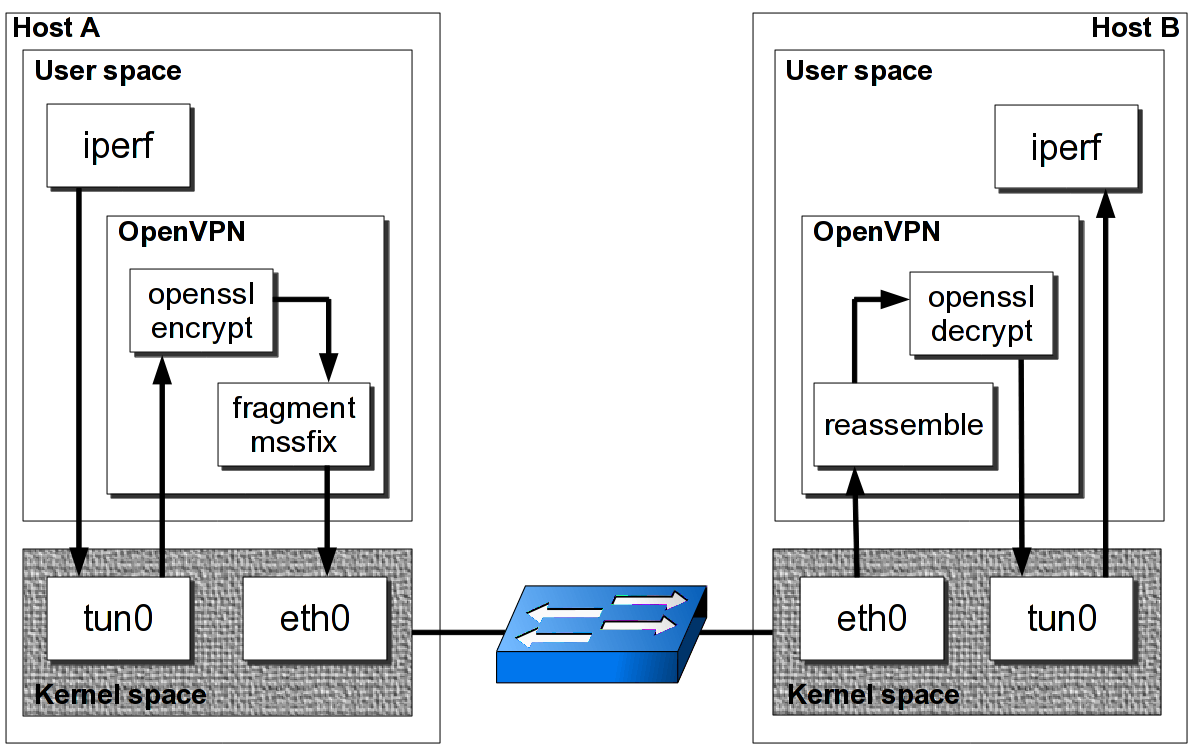| Version 5 (modified by , 13 years ago) (diff) |
|---|
Optimizing performance on gigabit networks
It is easily possible to saturate a 100 Mbps network using an OpenVPN tunnel. The throughput of the tunnel will be very close to the throughput of regular network interface. On gigabit networks and faster this is not so easy to achieve. This page explains how to increase the throughput of a VPN tunnel to near-linespeed for a 1 Gbps network. Some initial investigations using a 10 Gbps network are also explained.
Network setup
For this setup several machines were used, all connected to gigabit switches:
- two servers running CentOS 5.5 64bit, with an Intel E5440 CPU running @ 2.83GHz; the L2 cache size is 6 MB.
- a server running CentOS 5.5 64bit, with an Intel X5660 CPU running @ 2.80GHz; the L2 cache size is 12 MB. This CPU has support for the AES-NI instructions.
- a laptop running Fedora 14 64bit, with an Intel i5-560M CPU running @ 2.66GHz; the L2 cache size is 3 MB. This CPU also has support for the AES-NI instructions.
Before starting, the "raw" network speed was measured using 'iperf'. As expected, iperf reported consistent numbers around 940 Mbps, which is (almost) optimal for a gigabit LAN. The MTU size on all switches in the gigabit LAN was set to 1500.
Understanding the flow of packets
It is important to understand how packets flow from the 'iperf' client via the OpenVPN tunnel to the 'iperf' server. The following diagram helps to clarify the flow:
when an 'iperf' packet is sent to the VPN server IP address, the packet enters the kernel's 'tun0' device. The packet is then forwarded to the userspace OpenVPN process, where the headers are stripped. The packet is encrypted and signed using OpenSSL calls. The encryption and signing algorithms can be configured using the '--cipher' and '--auth' options.
The resulting packet is then fragmented into pieces according to the '--fragment' and --mssfix' options. Afterwards, the encrypted packet is sent out over the regular network to the OpenVPN server. On the server, the process is reversed. First, the packet is reassembled, then decrypted and finally sent out the 'tun0' interface.
Attachments (1)
-
OpenVPN-packetflow.png (85.1 KB) - added by 13 years ago.
OpenVPN packet flow
Download all attachments as: .zip

